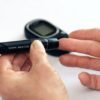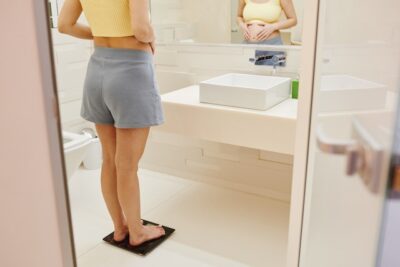Peripheral artery disease (PAD), a condition that impairs the blood supply to the limbs, particularly the legs, is the best sleeping position. It happens when plaque in the arteries builds up and causes blood vessels to become clogged or narrowed. People with PAD frequently experience discomfort, numbness, and leg cramps, particularly with physical exertion. The best sleeping position for peripheral artery disease can help to reduce symptoms and improve blood circulation, even if controlling PAD necessitates a full treatment strategy that includes dietary adjustments and medicines. The best sleeping position for peripheral artery disease will be discussed in this article, along with any potential advantages.
Peripheral Artery Disease (Pad) Symptoms
The blood vessels in parts of the body like the legs, feet, arms, and hands are impacted by PAD. Other body parts may also be affected.
Blood circulation issues could result from this disorder, which could be dangerous and even fatal. Depending on whether or not the arteries become blocked, the signs of PAD can be minor to severe.
1. Periodic Claudication:
It describes cramping, soreness, or aching in the arms or legs that often takes place during exercising like walking or working out. Resting for a little while can frequently ease the ache, but further action tends to make it worse.
2. Sleep Pain:
When PAD is more advanced, aches and pains can additionally be experienced during workouts but may also happen while resting or sleeping. This more serious symptom might be a sign of a substantial artery blockage.
3. Weakness Or Tiredness:
Weakness and weariness in the affected limbs can result from decreased blood supply to the muscles.
4. Tingling Or Numbness:
Some patients who have PAD may feel a dull sensation in their forearms or legs.
5. Extremities Of Cold:
The affected limb could seem chilly to the touch due to inadequate blood flow and poor circulation.
6. Skin Alterations:
Due to poor oxygenation, the skin on the legs or arms may seem pale or have a bluer hue (Cyanosis). The skin may occasionally become thin and glossy or acquire sores that take a long time to heal.
Things To Take Into Account For The Best Sleeping Position
There are a few things to think about while choosing the best sleeping position for peripheral artery disease:
1. Blood Circulation And Flow:
For those with PAD, optimal blood flow and circulation are essential. The chosen sleep position should encourage blood flow to the limbs, ensuring an adequate amount of nutrients as well as oxygen to the injured areas.
2. Comfort And Pain Management:
The most typical signs and symptoms of the condition are discomfort and pain. The best sleeping position for peripheral artery disease should reduce pressure on the injured limbs, ease pain, and promote deeper sleep.
3. Assistance For Affected Limbs:
To lessen stress and pressure on the arteries, it is crucial to provide enough support for the affected limbs. The ideal sleeping posture should provide the proper alignment and support, reducing undue strain on the limbs.
The Ideal Position To Sleep With Peripheral Artery Disease:
According to the aforementioned considerations, the following best sleeping positions for peripheral artery disease are recommended for people:
Elevate Your Legs: Do you use PAD to elevate your legs? If possible, raise your legs with pillows or a wedge cushion before going to bed to increase blood flow and lessen pain.
1. Side Sleeping:
For more leg support and improved blood flow, sleep on your side with a cushion between your knees.
2. Use Of Recliner:
To keep your legs raised and to add additional back support, think about sleeping on a chair.
3. A Relaxing Environment:
A comfy mattress, firm pillows, and a decent room temperature will help you sleep soundly. Use whatever is the easiest for your leg.
4. Light Exercise:
Improve circulation by doing low-impact workouts during the day, but refrain from doing anything strenuous right before bed.
5. Decrease Stimulants:
Avoiding caffeine and nicotine before bed is a good suggestion if you have difficulties falling asleep. These chemicals can interfere with your sleep cycles and make it more difficult for you to get the good night’s sleep you need. So spare yourself the late-night smoke or coffee and treat yourself to a restful night’s sleep instead.
6. Bedtime Rituals:
By establishing a bedtime routine, you can aid your body in unwinding and preparing for sleep. Your body will consequently be aware that it is time to unwind as a result.
7. Controlling Fluid Intake:
Reduce your fluid intake in the evening to lessen nocturnal interruptions from bathroom trips.
Pain management: To deal with the agony brought on by PAD, talk with your healthcare professional about pain management techniques.
8. Stockings With Compression:
As advised by your doctor, put on compression stockings to enhance blood flow and lessen edema.
8. Reduced Stress:
Before going to bed, it is advised to practice methods of relaxation like respiration or mindfulness to reduce stress and anxiety.
9. Regular Sleep Schedule:
Keep to a regular bedtime routine, even on the weekends, to keep your body’s biological clock in check.
10. Sleep Well:
To minimize disrupting your nocturnal sleep, keep daytime naps to 20 to 30 minutes.
Other Remedies For Pad Sleep Improvement:
Here are some more suggestions that, in addition to choosing the best sleeping position for peripheral artery disease, can help people get higher-quality sleep:
- Keep A Regular Sleeping Schedule: A regular sleep schedule can improve the quality of your sleep and help your body’s internal clock function more normally.
- Create A Comfortable Sleep Environment: Create a peaceful, calm, and cool sleeping environment in your bedroom to promote restful sleep. Use soft bedding, and if necessary, use earplugs or a sleep mask.
- Practice Relaxation Methods: Using relaxation methods before bed can assist in calming the mind and body and make it easier to fall asleep. Examples of these methods include deep breathing exercises and gentle stretching.
- Refrain From Using Stimulants: Caffeine and nicotine should be consumed in moderation as they can both disrupt sleep. Additionally, to reduce disturbances throughout the night, avoid consuming large meals and a lot of liquids just before bed.
- Speak With Your Healthcare Professional: Any sleep issues or worries should be brought up with your healthcare professional. They can offer personalized guidance and suggest extra tactics or remedies to enhance the quality of your sleep.
Conclusion:
The best sleeping position for peripheral artery disease can have a big impact on how well they sleep and how they feel overall. Blood circulation can be improved, discomfort can be reduced, and comfort can be increased by sleeping on your back with your legs elevated and utilizing pillows for support. For the best rest, keep in mind that a regular sleep schedule and supplementary sleep hygiene measures should be prioritized.
FAQs:
Q. What Kind Of Medical Professional Manages Peripheral Artery Disease?
An expert in vascular surgery or medicine is typically responsible for the treatment and management of peripheral artery disease (PAD).
Q. Is It Possible To Reverse Peripheral Artery Disease?
No, peripheral artery disease cannot be totally cured, but it can be treated and managed by making adjustments to one’s lifestyle.
Q. What Does The Spanish Term “Peripheral Arterial Disease” Mean?
Enfermedad arterial periférica (EAP) is the ICD 10 code for peripheral artery disease or peripheral arterial disease in Spanish.
Q. How Can Circulation In The Feet Be Improved As You Sleep?
Many people experience poor circulation while sleeping or lying on their feet. Therefore, elevating your legs when you sleep can help you enhance the blood flow to your feet.
Q. What Sleeping Posture Prevents Blood Clots The Best?
According to specialists, the position known as “The Right Side of the Hill” while sleeping is the most effective for preventing blood clots.










